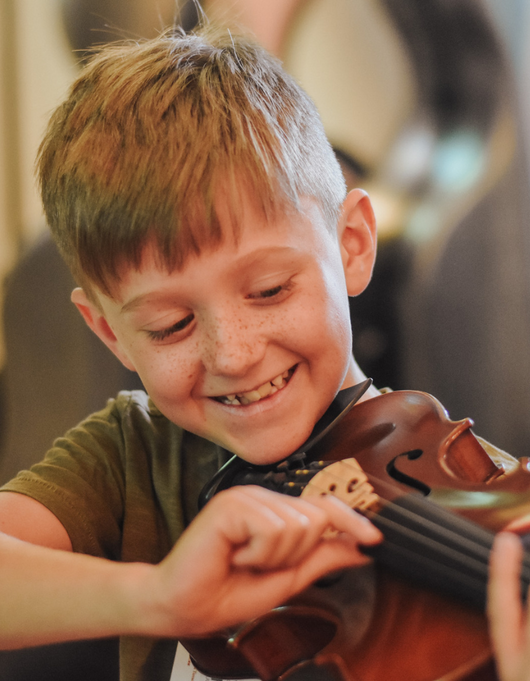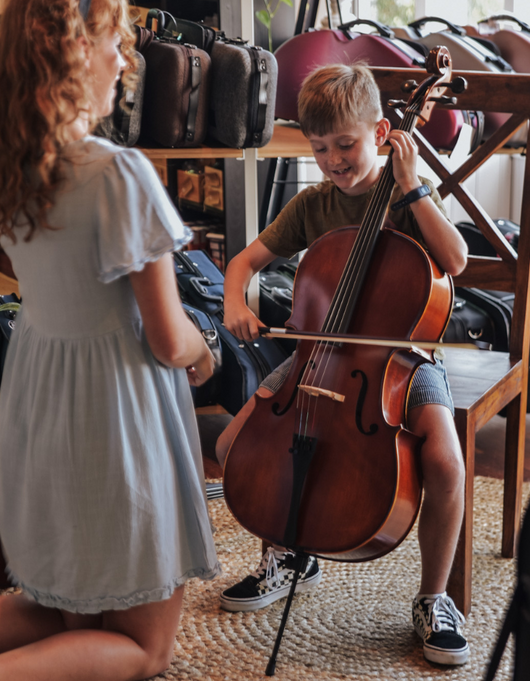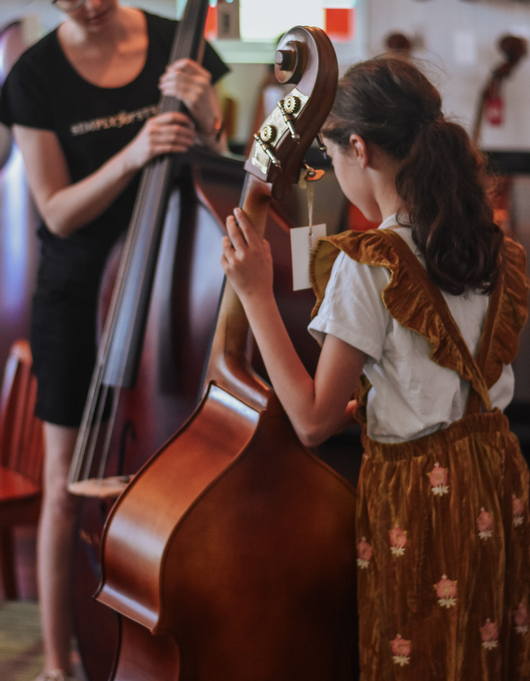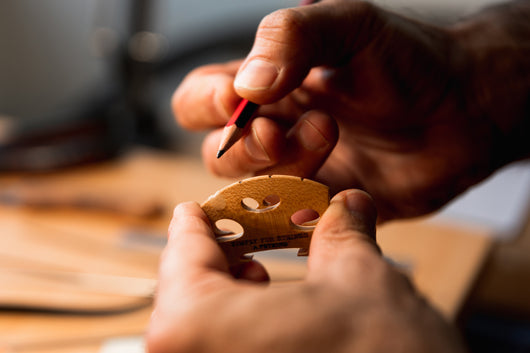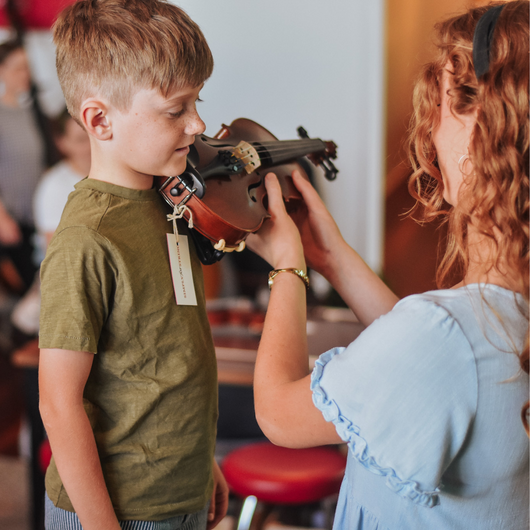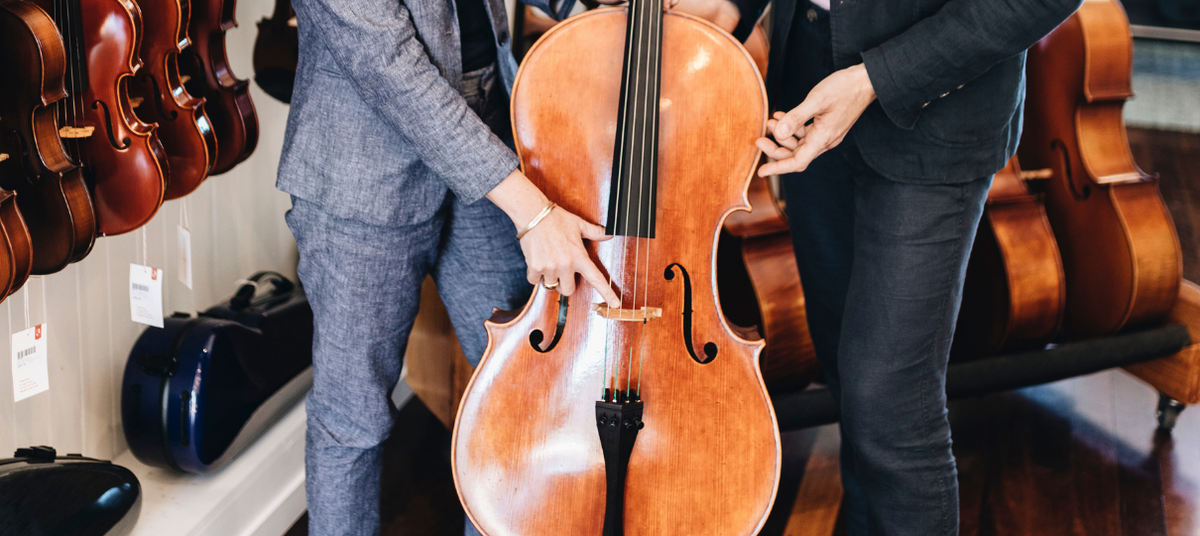History of the Cello
The cello is a bass musical instrument of the violin group. The earliest cellos were developed during the 16th century and made with five strings. Often mistaken for ‘just another string instrument’, the history of the cello will show you that they are one of the most unique instruments in the world.
At Simply for Strings, we have a range of celli for you to choose from. Whether you’re learning to play the cello or been playing for years, we have something for everyone. To get you inspired to play, here’s a brief history of the cello.
How did it all start? What is the musical history of the cello?
The cello, also called violoncello, French violoncelle, German cello, or violoncello, has a rich story. The history of the cello dates back to ancient civilizations. Instruments such as the harp and lyre were originally used to make music until a bow was introduced. Around the 13th Century, this resulted in the violin.
The Vienna Symphonic Library states that around the 1500’s, violin makers started making what is now known as the cello. From the 1500’s to the 1600's, luthiers Andrea Amati, Gasparo da Salo, and Paolo Maggini were credited with the first bass violin designs. At that point, high pitches were preferred, but this soon changed to instruments that could produce a variety of sounds.
Antonio Stradivari (1644–1737) was one of the main people to set the standards when it came to the cello. He originally made larger models around 80 cm but then settled on instruments with body length 75–76 cm, 34–35 cm wide at the top and 44 cm wide at the bottom, with ribs 11.5 cm high. These new measurements led to the development of solo techniques on the cello. Luigi Boccherini (1743–1805), a cello virtuoso and composer is regarded the most important proponent of this. Boccherini was one of the first to treat the cello more than an instrument, he treated it as a voice.
Further changes to string instruments were made during the French Revolution. For example, the bridge was raised and made thinner, the strings became thinner and the neck was set back at an angle. The cello string was also around 2 cm shorter than strings on smaller instruments today. The cello today now has four strings, pitched C–G–D–A upward from two octaves below middle C. It also has proportionally deeper ribs and a shorter neck than the violin.
What instruments are related to the Cello?
Celli are part of the string family. This family includes bodies of string instruments that are hollow inside to allow sound to vibrate within them. The instruments in this family are made of different kinds of wood but the strings are the part which makes the sounds. The strings are played by drawing a bow across them. The handle of the bow is made of wood and the strings of the bow are usually horsehair from horses' tails. Therefore, the cello is related to all the instruments in this family such as the violin, viola, double bass and harp.
Who are some famous cello musicians?
The cello is primarily an orchestral and chamber music instrument, but it is also heard in jazz, folk, rock and pop music as well. In the history of the cello, famous classical cellists include Yo-Yo Ma, Jacqueline du Pre, Zara Nelsova, Johann Sebastian Paetsch, Mstislav Rostropovichs, Janos Starker, and Maurice Gendron. Over time, rock and pop bands have also used the cello in their music. These include Led Zeppelin, the Beatles, ELO, Genesis, Pink Floyd, Aerosmith, and Panic at the Disco.
If you want to be the next famous cello musician check out 8 Ways to Motivate Yourself to Practice Your Instrument.
What are some cello designs and accessories?
Over the history of the cello, the instrument has seen slight variations to it with many accessories developed to increase the user experience. At Simply for Strings we have a range of cello designs available for you no matter what level you’re on. We have designs for beginners, intermediate level, advanced level and even electric & carbon fibre celli.
Celli also have many accessories that’ll help improve your cello experience and sound quality.
The most common accessories for celli are:
- Cases - these are used to protect the cello and bow when on the move and also a safe way to store your instrument.
- Rosin - this is applied to the bow hairs to increase effectiveness of the sound the cello makes. Read our No-Nonsense Guide to Rosin for String Instruments.
- Rock stops - these help keep the cello from sliding if the endpin does not have a rubber piece.
- Wolf note eliminators – these can be placed on cello strings between the tailpiece and the bridge to minimise the wolf tones.
- Mutes - these are used to change the sound of the cello by reducing overtones and reduce the volume. Read our Guide to Mutes for String Instruments.
- Digital Metronomes - these visually mark the tempo and help deliver a powerful sound.
Read more on How to Shop for Advanced Instruments.
What is the role of cellos today?
History of the cello has shown that celli are considered to most closely resemble the human voice. This is one of the main reasons celli still has a unique role to play today. A full orchestra can have anywhere from eight to twelve cellos in it at one time. Cello has crossed over many genres of music. Recently, the cello has also become popular in rock music and got its own sub-genre known as cello rock. These days it’s common to see a cello being played next to traditional rock instruments such as electric guitars, electric bass guitar, and drums.
If you’re ready to try out a cello, read more on Should You Rent or Buy a Musical Instrument.
The history of the cello showcases what an amazing instrument this is to play. At Simply for Strings, we offer a range of celli from makers and manufacturers from around the world. All our instruments are professionally set up by a trained luthier. We have a huge range of celli for all budgets. Get in touch with us on 1300 739 293 or order online.



